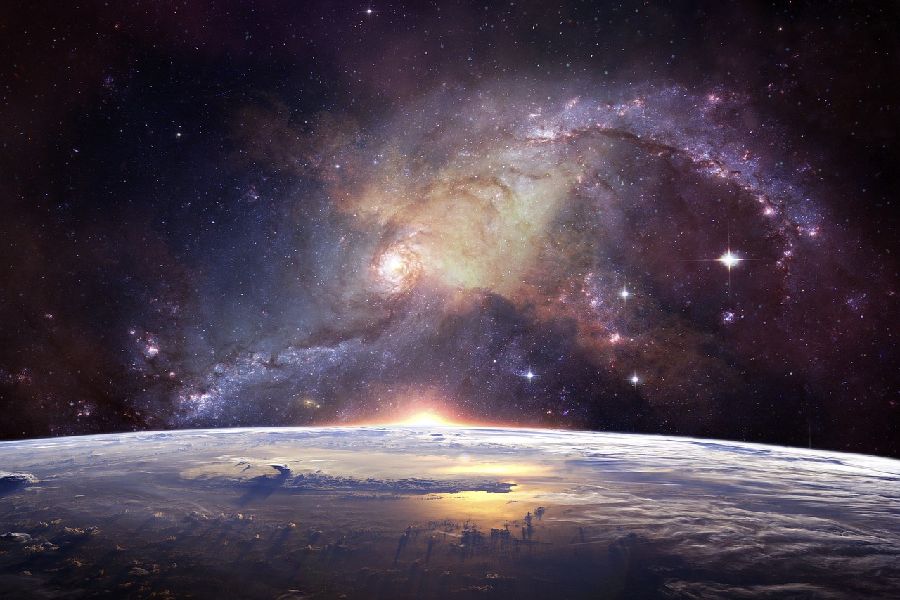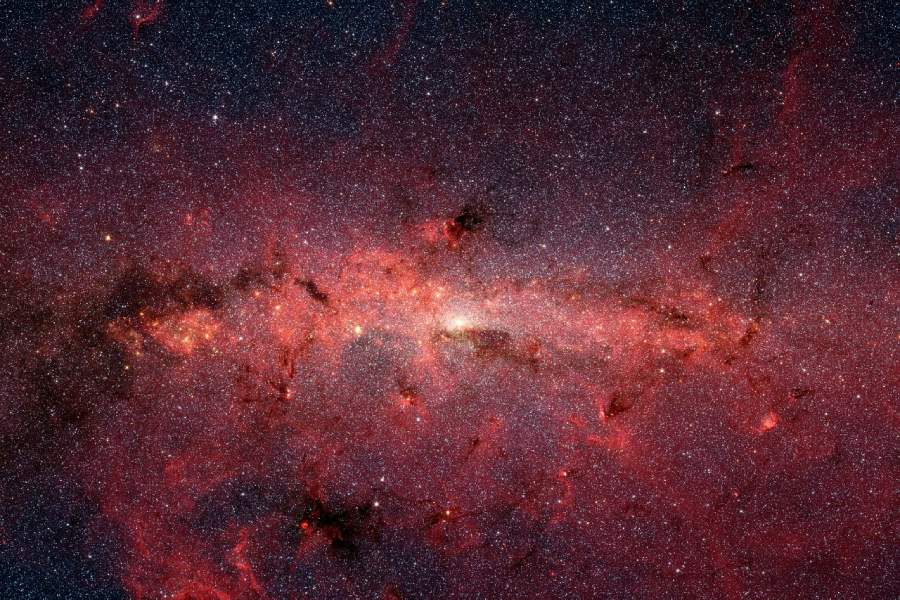Though stars sparkle perpetually in the night sky, they progress through pivotal evolutionary phases, just like living beings. They follow the fascinating life cycle of a star marked by stages of birth, maturation, and eventual demise dictated by their mass and physics.
This article will unveil how stars take shape from vast clouds of molecular gas that collapse under gravity. We track a star’s changing properties from luminous infancy to stable adulthood and trace the expansion into Red Giants.
We will also dissect the compelling cosmic question about what causes a star to die. Let’s embark on a journey through cosmic time spans to experience their entrancing life cycle.

Life Cycle of a Star
What is the life cycle of a star? A star is born when a cloud of hydrogen and helium gas collapses under gravity, igniting nuclear fusion and creating a protostar. As the star fuses matter in its core over millions of years, it stabilizes into an adult Main Sequence star shining from that energy.
The star then evolves into a Red Giant as its core runs out of fuel and the outer layers expand outward. Further collapse and burns occur, with the star fusing heavier elements.
Eventually, smaller stars end as dense white dwarfs. In contrast, massive stars explode as dazzling supernovae, dispersing matter to enrich interstellar gas for new stars in a cycle lasting billions of years.
Formation of a Star
Stars form from gigantic clouds of gas and dust spanning light-years of space. These nebulae gradually collapse under their own gravity into dense clumps with embryonic stars.
As gravity compresses the cloud, centers heat up, reaching temperatures for nuclear fusion. A new star switches on as hydrogen atoms begin fusing into helium, generating heat and light.
The birth of a new star occurs when gravity has done its work, forging the crucible conditions for hydrogen fusion ignition, resulting in stellar fire.
Core Temperature Increase
As the cloud keeps contracting, gravitational potential energy converts to higher kinetic energy or heat. Core temperature rises from thousands to over 15 million °C.
Higher temperatures accelerate particle speeds enough to overcome electrostatic barriers when hydrogen fuses into helium. This nuclear fusion releases enormous energy.
Increasing density and velocity from gravitational collapse begets fantastic heat buildup. This buildup allows fusion, stellar formation, and cosmic light production.
Gravitational Collapse
The star-forming cloud continues collapsing under its own weight even as parts begin fusing hydrogen. Gravity compresses the protostar enormously to reach densities like lead.
Intense gravitational forces overwhelm all other interactions. This allows further contraction and heating. Contraction and heating continue until conditions allow sustained nuclear fusion. Nuclear fusion inhibits more collapse.
Gravity assembles the raw materials. It forges the internal temperatures and densities necessary to permit the first flickering sparks of fusion fire.
Nuclear Fusion Begins
At around 10 million K, hydrogen nuclei in the protostar’s core fuse create helium. This exothermic reaction releases photons, dispersing energy outward and countering gravity.
Hydrogen fusion marks the star’s birth, generating huge energy as mass converts to radiant energy following Einstein’s equation E=mc2. This outward pressure balances gravity.
Main Sequence Stars
Hydrogen fusion provides a long-lasting source of energy support against gravity over billions of years during the star’s main adulthood phase, called the main sequence.
Main sequence stars exhibit stable luminosity, temperature, and size with mass-determining properties. Our Sun is a main sequence star. Most spend 90% of their lives fused here.
Heavier Elements Formed by Nuclear Fusion
Inside stars like our Sun, light hydrogen and helium nuclei smash, generating heavier elements up to iron through fusion chain reactions.
Stellar fusion enriches the star with small amounts of carbon, oxygen, sodium, and heavier atoms. This leads to composition and property variations between stars.
Nucleosynthesis in stars produces the building blocks for carbon-based life and planets – enriching the cosmic tapestry with the material for worlds.
Hydrogen into Helium Conversion Process
Inside the main sequence stars, hydrogen fuses into helium through proton-proton chain reactions. Here, the four protons become helium-4 and release binding energy.
The conversion of hydrogen to helium through nuclear fusion provides, most energy stars emit. The proton-proton chain dominates smaller stars like the Sun. As the most direct route to converting hydrogen fuel into helium ash, the proton-proton chain supplies the energy needed for stars like our Sun to shine.
Brightest Star in the Universe
Stars over 100,000 times brighter than the Sun exist, like Rigel Kentaurus A (Alpha Centauri A). Supergiant blue stars can achieve extreme luminosities but only for short durations.
Most brilliant stars help trace structure, motion, and cosmic distances as standard beacons. They seed new stellar nurseries on death through violent supernova explosions.
Comparison of Low-Mass Stars and High-Mass Stars
High-mass stars fuse elements quickly, exhausting hydrogen fuel within millions of years. Lower mass ones, like the Sun, take billions of years to leave the main sequence.
Stellar lifespan, luminosity, and final fate are linked to original mass. Small stars cool down, becoming white dwarfs, while heavy stars end explosively as neutron stars or black holes.
The initial mass of a newborn star determines its fuel burn rate, lifetime trajectory, brightness evolution, and ultimate death scenario playing out across cosmic timescales.
Surface Temperature and Luminosity Changes During Main Sequence Stage
As stars age, converting hydrogen to helium, luminosity may increase up to 30% while temperatures decrease slightly around 5%.
Detecting brightness and temperature fluctuations allows the creation of computational models mapping key signposts in a star’s life cycle and future evolution.
Careful astronomy measurements of stellar properties over time reveal subtle but important changes taking place internally as fusion progresses.
Death of a Main Sequence Star
The star expands after hydrogen fuel depletes, becoming a Red Giant. Next stages depend on mass, leading to nebulae, white dwarfs, neutron stars, or black holes at the end. This sets the stage for the next evolutionary phase or death. Why does a star die across such myriad fates? Because fusion ceases, robbing it of the energy to resist gravitational collapse.
The star stops shining from fusion and changes under gravity again – collapsing or shedding outer layers preparing for tremendously transformative endings across billions more years.
The cessation of hydrogen burning marks the beginning of the end of a star’s stable life story. Great expansions, contractions, and explosions await.

Conclusion
We conclude the phenomenal progression stars traverse from luminous birth to explosive demise over billions of years, following an intriguing life cycle of a star with stages dictated by mass and physics.
Despite shining eternally, stars pass through pivotal evolutionary phases of maturation, adulthood, and death across their cosmic lifespans.
This article has illuminated how these heavenly bodies sculpt galactic ecology for future stellar generations through collapse and fusion processes over the life cycle. Their lifespan legacy profoundly transforms environments by seeding new star nurseries.
Grasping secrets underpinning the fascinating life cycle of a star grants insights into our cosmic origins. As ancient stargazers understood, the very atoms in us once cycled within fiery cauldrons of long-extinct stars, the source of all creation and destruction across the universe.
